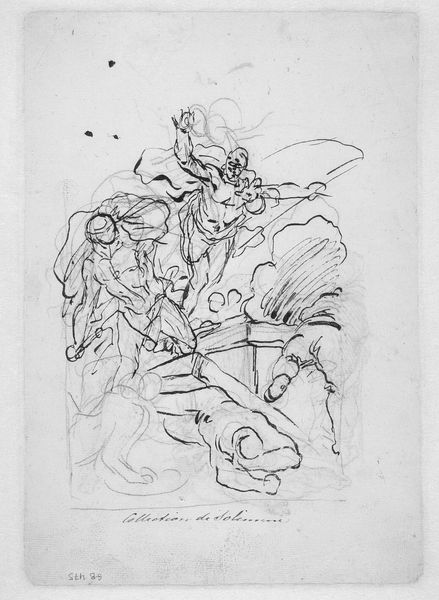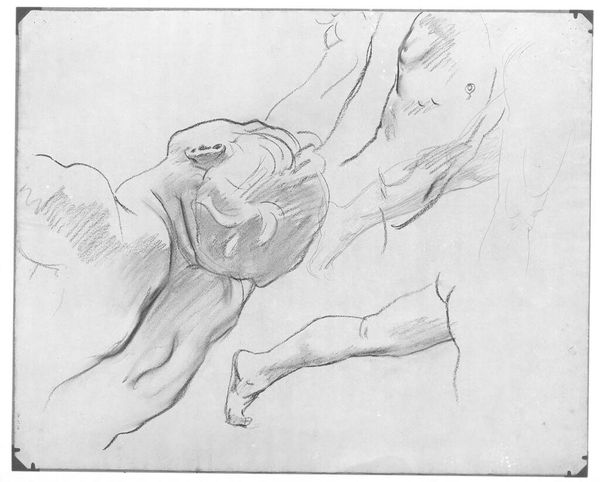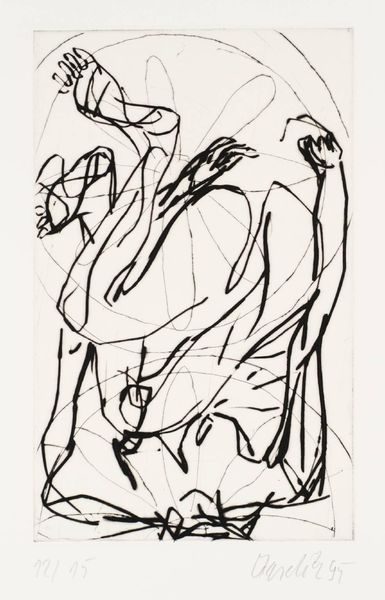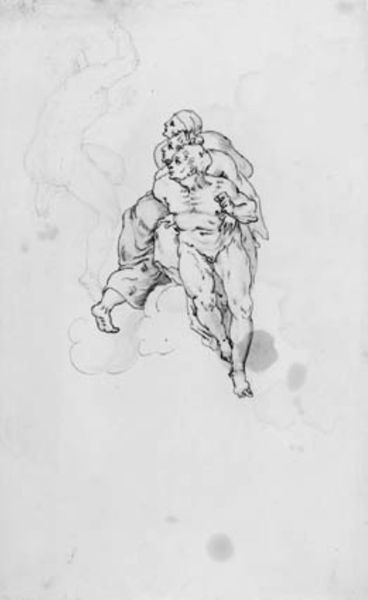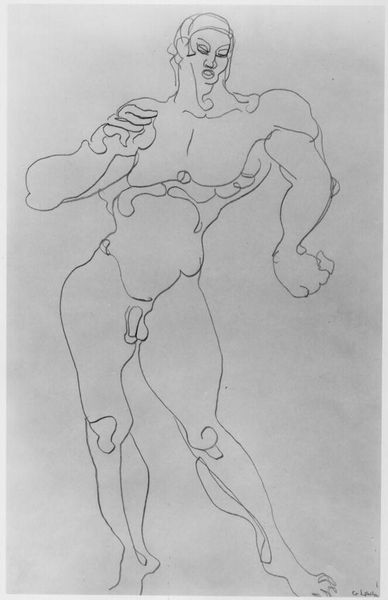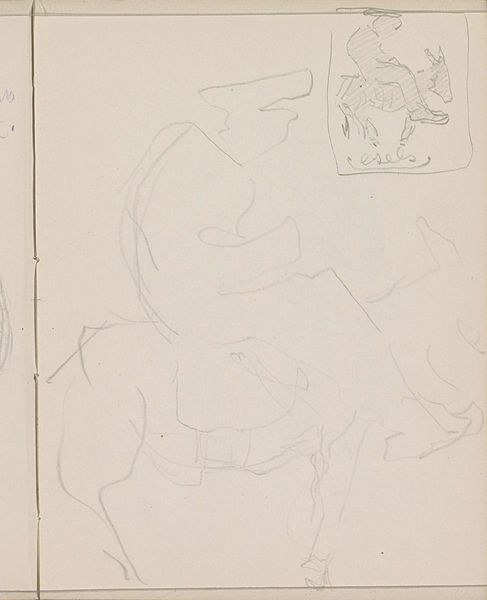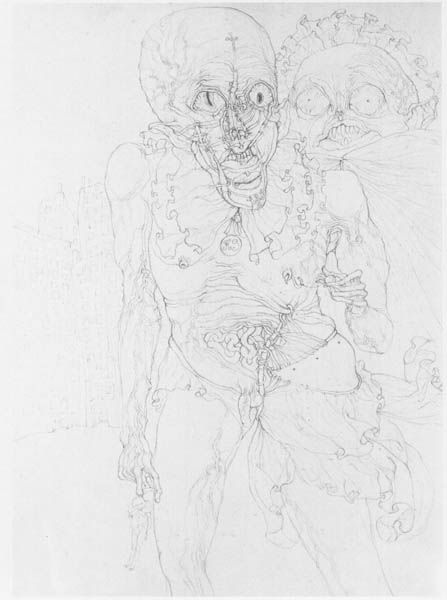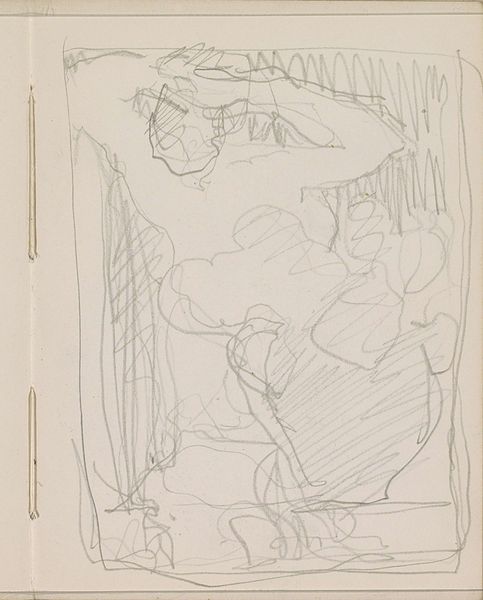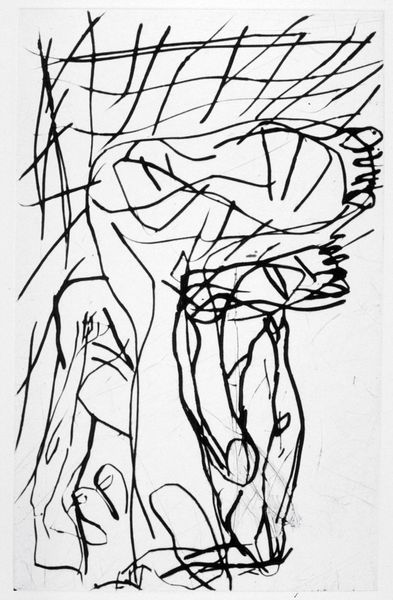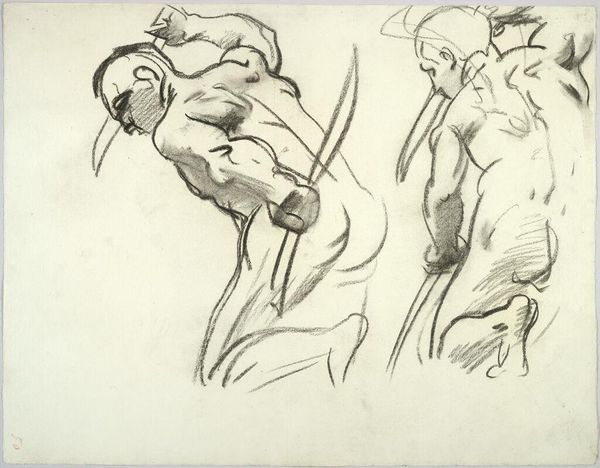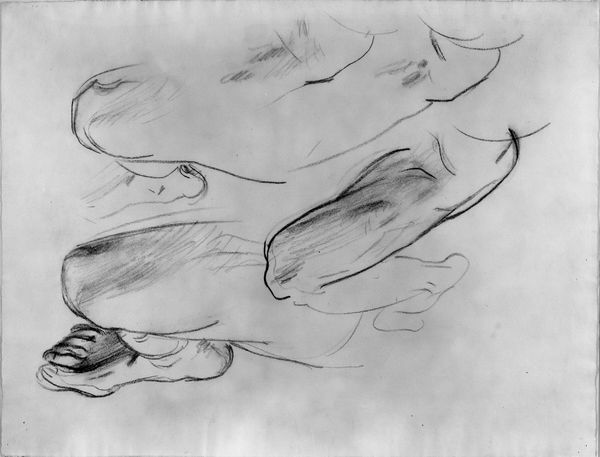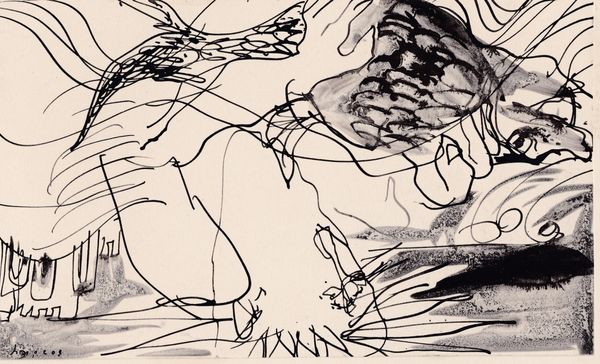
drawing, ink, pen
#
drawing
#
ink drawing
#
pen illustration
#
pen sketch
#
mannerism
#
figuration
#
ink
#
pen
#
genre-painting
#
history-painting
Dimensions: 417 mm (height) x 287 mm (width) (bladmaal)
Curator: This piece really throws me for a loop, doesn't it? Editor: Agreed! Well, allow me to set the stage. We’re looking at "Fighting Men," a pen and ink drawing made sometime between 1550 and 1599 by an unknown artist. You can currently find it hanging on the walls of the SMK, the Statens Museum for Kunst. It has a very distinct sense of mannerism about it, doesn’t it? What catches your eye first? Curator: The rawness, I think. There’s something so visceral in the struggle—the straining bodies, the crude, urgent lines. It’s as if I've stumbled upon a private brawl, frozen in time but still radiating a hot, chaotic energy. Editor: The dynamics are palpable, for sure. Beyond the raw energy, what speaks to me is how this work encapsulates the tumultuous societal dynamics of its time. Consider the 16th century - a period of religious conflict, political upheaval, and rampant social inequality. This fracas may reflect this violent era, especially when viewed through lenses of power, privilege, and class. It is about who is included and who is excluded. Curator: That makes total sense! You know, seeing it now through that lens, the composition itself feels strategic. The anonymous artist positions us right in the thick of it, almost forcing us to confront the brutality. Are we meant to be spectators? Accomplices? It makes one wonder... Editor: I agree completely. Art often imitates, reflects, and foretells. So are those who are most brutally fighting always meant to be the subjects? Or can the powerful also be victims, perhaps the final one? That said, what seems particularly clever about this image is how its lack of detail implicates *everyone*, blurring boundaries between perpetrator, victim, and even us the viewers, compelling all into these complex networks of complicity. Curator: Right, and perhaps by obscuring specifics and details, the artist makes it a symbol of ANY such conflict and era! Editor: Precisely! It moves beyond being a history painting toward becoming an analysis of human behaviors in the past, present, and future. The reality that this simple drawing may carry and communicate through various times across epochs reveals what makes "Fighting Men" eternally resonant and unfortunately relevant even today! Curator: Indeed, an ambiguous reminder of something fundamental within human nature, always on the brink of erupting.
Comments
No comments
Be the first to comment and join the conversation on the ultimate creative platform.

